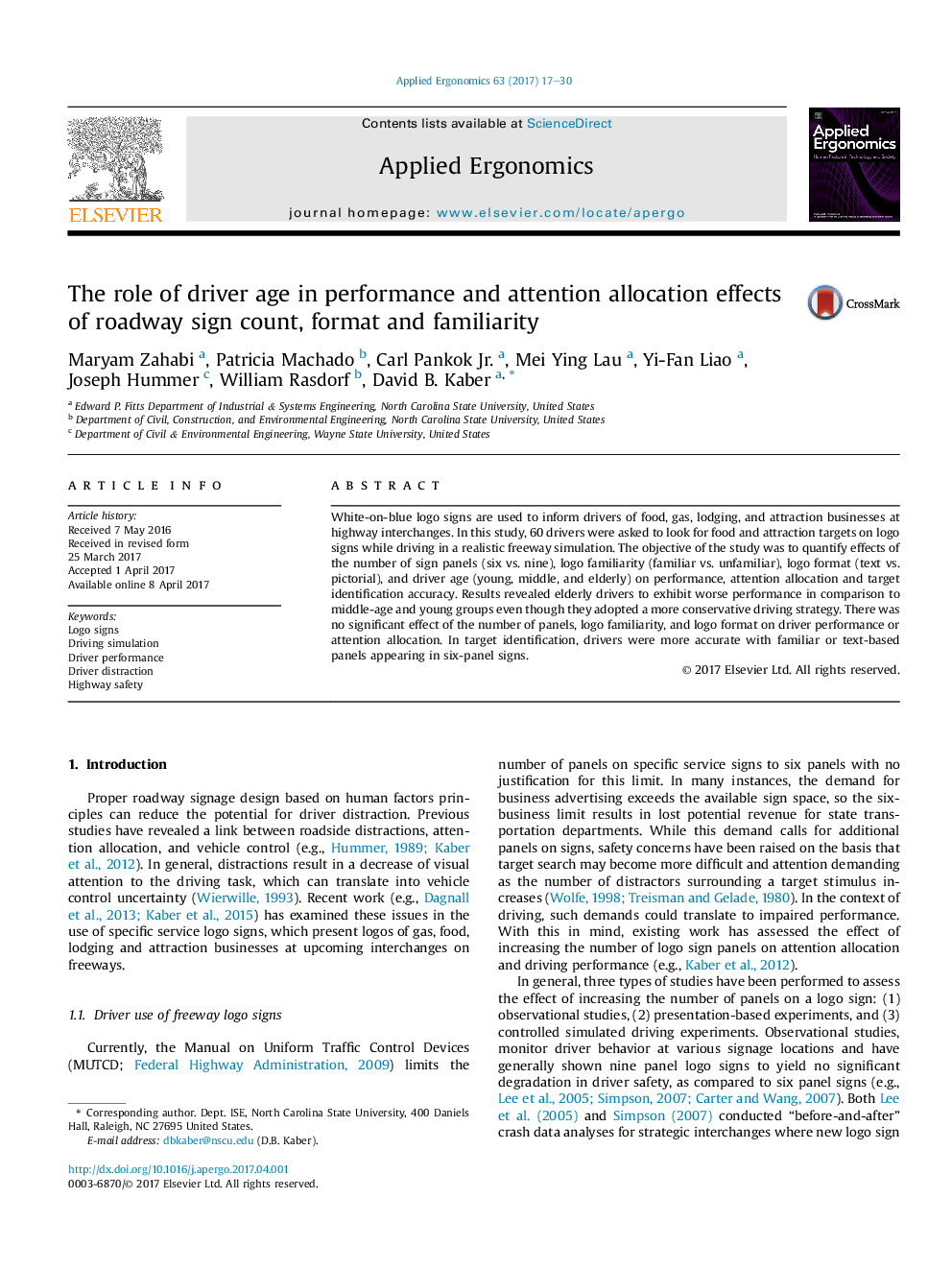| Article ID | Journal | Published Year | Pages | File Type |
|---|---|---|---|---|
| 4972067 | Applied Ergonomics | 2017 | 14 Pages |
Abstract
White-on-blue logo signs are used to inform drivers of food, gas, lodging, and attraction businesses at highway interchanges. In this study, 60 drivers were asked to look for food and attraction targets on logo signs while driving in a realistic freeway simulation. The objective of the study was to quantify effects of the number of sign panels (six vs. nine), logo familiarity (familiar vs. unfamiliar), logo format (text vs. pictorial), and driver age (young, middle, and elderly) on performance, attention allocation and target identification accuracy. Results revealed elderly drivers to exhibit worse performance in comparison to middle-age and young groups even though they adopted a more conservative driving strategy. There was no significant effect of the number of panels, logo familiarity, and logo format on driver performance or attention allocation. In target identification, drivers were more accurate with familiar or text-based panels appearing in six-panel signs.
Related Topics
Physical Sciences and Engineering
Computer Science
Human-Computer Interaction
Authors
Maryam Zahabi, Patricia Machado, Carl Jr., Mei Ying Lau, Yi-Fan Liao, Joseph Hummer, William Rasdorf, David B. Kaber,
